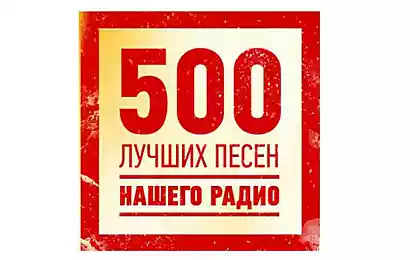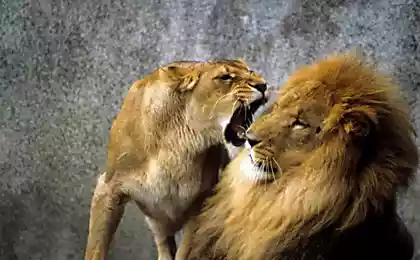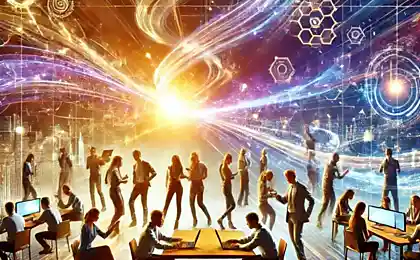1335
Hate speech on the Internet or to send as not to come back?

Each user in your virtual life faced with negative comments, insults or remarks in his address, but many are the source of such « Sends i>». In real life, these negative situations happen less often. The causes of such behavior is important, but remains open the more important question - how to stop the battle raging stream, which sometimes results in response to a post or opinion.
In this "many letters" -Article we'll try a little bit to understand the causes of aggressive behavior of network users, and give a few examples from the life of our startup is not a startup, not gang gang.
The first is to apply the concept of "hate speech", witnesses or sources which are commentators. & Quot; Speech aggression - the explicit opposition to the other party, the purpose of hate speech is to cause offense or deliberate harm to the person, group of people, organization, or society in general. This behavior is characterized by consciousness, intention and controlled i> & quot ;. Thus, the inhabitants of virtual worlds express their opposition, in what, by and large, there is nothing wrong - we have the right to disagree with the opinion of others - but consciously and deliberately insulting others.
Features manifestations of hate speech in the network

Hate speech on the Internet and everyday life is manifested in different ways. This is largely due to the absence of some factors and the presence of others. In the network there is no possibility to install eye contact, body language to express their opinions or increase the volume of voice. However, gestures, for example, began to replace the "Smile" or images that complement the many statements. Savvy users from time immemorial use capital letters to create the effect of shouting or raising your voice.
With eye contact is worse, and this is one of the key factors in the perception of the meaning of the words of the interlocutor in real life. Eye contact is a psychological dosimeter, which measures the state of the interlocutor, often predict his reaction or determine what information he is now able to perceive, and what not. While it is often the eye / eye contact is a still a factor that causes a person not to take an aggressive stance towards the opponent. This is due to the fact that a person, not seeing the interlocutor, the psychological effect on the pattern generated on the basis of previous experience. In other words, if the young man saw the online comment from a stranger without a photo, then with 95% probability he will project the image of the previous battles.
So, if he often has to deal with his peers, he will respond, using the language, manner of speech and images inherent to argue with them and imagine just such a way. This pattern is usually broadcast on age, gender, social groups, and even geographic location (anonymous debaters from big cities in 8 cases out of 10 tend to assume that their interlocutors are in their city - it happens unconsciously).
Example: our PR-manager (woman named Sasha, which is signed and) after the publication of the announcement of one of our projects, communicate with users in the comments. With several conversation flagged. After some time in its address flew expected masculine "moron", "Vasek", "sir", "my friend." It became clear that it is worth to introduce myself. Was only enough pairs of verbs last time in the form of the feminine to opponents began to behave much more reserved. Adding profile photos and made them all friendly and calm commentators who were suddenly able to constructive responses substantially, not only the bile and aggression.
There are other features of display voice-aggression in online communication:
1. You are the categories ("you - enikeyschiki»);
2. Negative nomination recipients ("chmoshnik»);
3. Active use of negatively stained colloquial vocabulary ("I am your Drupal in a colander drupal»);
4. The use of certain speech genres (evaluative statements, modal expressions, rhetorical questions, masking threat, direct calls to action);
5. Generalization and removal of the brackets themselves ("you're shit and nubё, I was most Kovaler»).
Example 5 th paragraph: Among other things we are doing translations clips about technical subjects in Russian. Having finished one such transfer, we politely asked the one known site on popular brands of mobile phones, they are not interested in that place at the roller, as He was fresh and interesting for many users. In return, we did not ask for anything absolutely, for us it would be just a good promotion. In response, we suddenly received a waiver in the form « translate - many do not mind i>», will not publish anything. After we asked what's wrong, the answer was: & quot; Good luck with plagiarism and copying other i> & quot ;. After this was only enough indication that the site is 80% of the translations of materials other sites and any credible argument has not followed.
Reasons manifestations of hate speech
With the features of aggression in the virtual environment the situation is clear, with some reason, all too predictably enough. There are several reasons for the spread of aggressive verbal behavior on the Internet. One of them is anonymous, ie impossibility of being recognized by others. Types of anonymity in this case the following:
1. Social (lack of verbal communication, visual identification of the exterior, the opportunity to hear his voice when communicating);
2. Technical (hidden name, address, IP address, phone number, etc.).
On the one hand, the anonymity can not be considered a negative factor, since it is an integral part of the security and privacy of users in the network. On the other hand, anonymity gives you unlimited freedom of expression, which is often not for the benefit of, and the ability to stop the communication at any time, you can not do a "live" conversation. After all, even if fleeting skirmish with someone on the street is not possible to evaporate from the scene of the conflict, and it will take time in order to get away from him. Thus, we can conclude that aggression in the real world has a "value", which is expressed in a more necessary time / effort on the conflict that can cause more stress and sometimes require physical involvement in the confrontation. Verbal aggression in the network has a lower "cost" with comparable efficiency. Thus, the anonymity of users in the network pushes them to aggression.
Another reason for the aggression is less obvious, but scientifically proven and explained by the existence of so-called social modeling. Social simulation - a kind of repetition of the models existing in any medium. For example, a user who sees a few negative comments on the article, are more likely to repeat this behavior pattern in his comments than when neutral or positive comments. Simply put, if a roller on Youtube or article on the site of the first ~ 10 comments are negative, then the 11th user with high probability will also leave a negative feedback.

This is due to the fact that no one has subconsciously wants to be the black sheep and the court on the criticism of dissidents. Because people who have opinions different from most commentators view, rarely express it publicly, so as not to become the object of aggression by others. There comes to mind a quote from the novel of the prohibited 60-80. "The Catcher in the Rye»: « That's all luck. You can not find a calm, quiet place - do not have it in the world. Sometimes think - and maybe it is, but as long as you get there there, someone sneaks in front of you and write obscenities right in front of your nose i> ».
Example: publishing one of our projects on the popular entertainments and knowledge sites you'll ever we are faced with the fact that the first 10 comments were sharply negative. After that, it was clear that the situation has not changed (See above.), And we measured two parameters - the number of plus / Like and the number of negative comments. Statistics only confirms the theory - more than a hundred pros, a lot of positive reviews for personal communications with more than 40 negative comments made publicly.
Total anonymity, multiplied by an aggressive social model gives us an abundance of talented commentators differing sophistication in what blasphemies whatsoever ("Do not look, but blame"), and irrepressible zeal in whatever was to prove their case completely unfamiliar people whose opinions often plays no role in the life of the commenter.
Trolling and its variants

However, in virtual communities communicate billions of anonymous users who are watching both neutral and aggressive speech patterns, but not all are showing hate speech in his statements. This fact is explained by the fact that there are internal conditions, personality traits, "troll", which appear in such behavior.
One prerequisite is the need for a negative reaction to a provocation that brings the "Troll" kind of sadistic pleasure and a sense of belonging to the elaboration of emotions opponent. Such feelings often experienced musician, watching his song cause positive emotions in the audience, a sense of pride from the fact that the actions become meaningful to others. Also an important role in meeting the needs of "troll" plays incomplete fulfillment in real interpersonal interaction, ie, troll is just not enough to communicate in real life, enjoy it does not feel its importance in it. In addition, the "trolls" can choose aggressive provocative statements as a form of expression for their own lack of understanding or lack of interest in the topic of discussion.
Sometimes the "trolls" have a need to pursue the victim beyond a single discussion, translating dispute in other communities or on user pages on social networks. Typically, this happens when the victim of aggression is drawn into a kind of rope drag and demonstrates his emotional reaction to the actions of "trolls." Long trolling addressed to users can cause various reactions from their side until cyber suicide - the voluntary removal of your account, withdrawal from discussions with a view to stop the flow of aggression in his address; and sometimes up to a real suicide, as happened repeatedly .
There are several varieties of "trolls": troll-commentator feels the urgent need to engage in all kinds of discussions, regardless of their own involvement in the topic of discussion. Proving and promoting their point of view, the troll-commentator uses pseudo facts, insults to other points of view, their own erudition and other dubious means. One of the most proven means of evidence is considered proof by contradiction, often marked by the phrase "Well, Che?".
Troll provocateur sees the goal of creating a negative atmosphere in the community, which resorts to open expression of aggression against that whatsoever.
Troll hero-lover, usually a man, feels the most witty and irresistible cavalry, his sexist comments brings the conversation to the topics "yabyvdul", "pokazhisisuli", "kakayadevushka" and other insulting remarks against the opposite sex. In reality does not match the image was often being the complete opposite of him.
Troll-adviser seeks to "inflict favor" to one and all his useless and obvious comments. Victim of trolling at some point or another it begins to understand and shows aggression in response, thus helping to achieve the goal troll.
When interacting with any kind of "troll" is important to remember that any manifestation of aggression in their address will be perceived "troll" as the desired result of the interaction, as it is his ultimate goal. The only proper response to such behavior is its complete disregard and rejection of any interaction with the agent provocateur. Aggression breeds aggression, and vice versa, the observance of the rules of verbal communication and respect for its members allow for successful communication.
In regard to the statements in the comments of their own negative opinions (albeit quite justified), remember one thing - if you're willing to say about the work of a man all the same thing in his face, then write and criticize, if not, think about the value his criticism expressed in anonymous comments, but usually anonymous commentators tend to overestimate his courage.
Anastasia Smolskaya, Max Mironchik; 2014 i>
References: Bastards, RA Trolling as a form of social aggression in virtual communities / RA Bastards // Philosophy. Sociology. Psychology. Pedagogy. Bulletin of Udmurt University. - Izhevsk, 2012. - Vol. 1 - 4 c.
Steksova, TI Verbal aggression in Internet comments as an expression of social tensions / TI Steksova // 3. Political Linguistics - Ekaterinburg, 2013 - Vol. 45. - 5 c.
Konnikova M., The Psychology of Online Comments / M. Konnikova // The New Yorker. -October 23, 2013.
Zimmerman, Adam G. Online Aggression: The influence of anonymity and social modeling / Adam G. Zimmerman. - University of North Florida. College of Arts and Sciences. - 2012. - 51 p. I>
P.S. One example, caused a strong reaction trolls
Source: geektimes.ru/post/241762/























